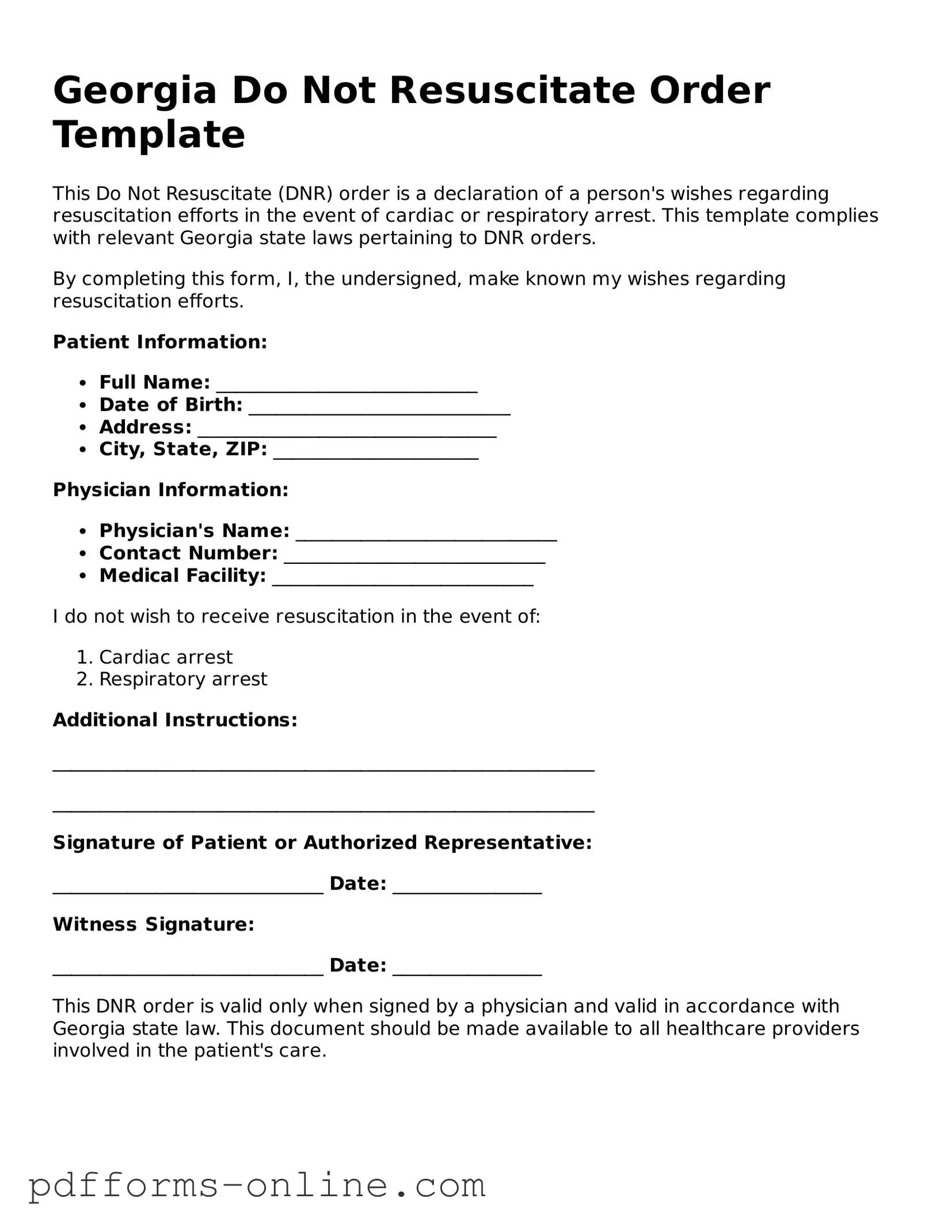The Advance Directive is a legal document that outlines a person's wishes regarding medical treatment in the event they become unable to communicate those wishes themselves. Like the Georgia Do Not Resuscitate Order (DNR), it allows individuals to specify their preferences for life-sustaining measures. Both documents ensure that a person's healthcare decisions are respected, even when they cannot speak for themselves.
A Living Will is similar to the DNR in that it provides guidance on an individual’s preferences for end-of-life care. This document typically addresses various medical treatments, including resuscitation, and is used to communicate wishes about life support and other critical care decisions. Both the Living Will and the DNR serve to honor a person's desires in critical situations.
The Physician Orders for Life-Sustaining Treatment (POLST) form is another document that aligns closely with the DNR. POLST translates a patient’s wishes regarding resuscitation and other life-sustaining treatments into actionable medical orders. While the DNR focuses specifically on resuscitation efforts, the POLST provides a broader scope of care preferences, ensuring that medical personnel understand and follow the patient’s wishes.
Healthcare Proxy documents designate a specific individual to make healthcare decisions on behalf of someone who is incapacitated. This is similar to the DNR in that both aim to ensure that a patient’s preferences are honored. While the DNR specifies what treatments should not be administered, the Healthcare Proxy empowers a trusted person to make decisions in alignment with the patient’s values and wishes.
The Do Not Intubate (DNI) order is closely related to the DNR, as it specifically addresses the patient’s wishes regarding intubation and mechanical ventilation. Both documents serve to communicate a patient’s preferences about aggressive medical interventions. The DNI ensures that, if a patient is unable to breathe on their own, they will not be placed on a ventilator, similar to how the DNR prevents resuscitation efforts.
An End-of-Life Care Plan outlines a comprehensive approach to care during the final stages of life. Like the DNR, it reflects the patient’s wishes regarding the types of medical interventions they want or do not want. Both documents are crucial for ensuring that healthcare providers respect the patient’s desires as they approach the end of life.
The Comfort Care Order focuses on providing relief from pain and suffering without aggressive life-saving measures. This document aligns with the DNR by emphasizing quality of life over prolonging life through medical interventions. Both documents prioritize the patient’s comfort and dignity, especially in critical situations.
The Medical Power of Attorney allows an individual to designate someone to make healthcare decisions on their behalf. This is similar to the Healthcare Proxy but may include broader powers. Both documents ensure that a trusted individual can advocate for the patient's wishes, including those expressed in a DNR.
Understanding the nuances of legal documents like the Florida Power of Attorney form is essential for individuals planning their healthcare and financial decisions. This form empowers a designated agent to act on behalf of the principal, ensuring their preferences are honored during critical times. For more information on the specifics and implications of such forms, you can visit https://onlinelawdocs.com, which provides valuable resources on these important legal tools.
The Do Not Hospitalize (DNH) order is a directive that indicates a patient’s preference to avoid hospitalization, often in end-of-life scenarios. Similar to the DNR, it reflects a patient’s desire to receive care in a familiar environment, such as at home or in a hospice setting, rather than in a hospital, where aggressive interventions may occur.
Finally, the Palliative Care Plan outlines a strategy for managing pain and symptoms without focusing solely on curative treatments. Like the DNR, it emphasizes comfort and quality of life, ensuring that the patient’s preferences for care are prioritized. Both documents work together to create a compassionate approach to healthcare during serious illness.
